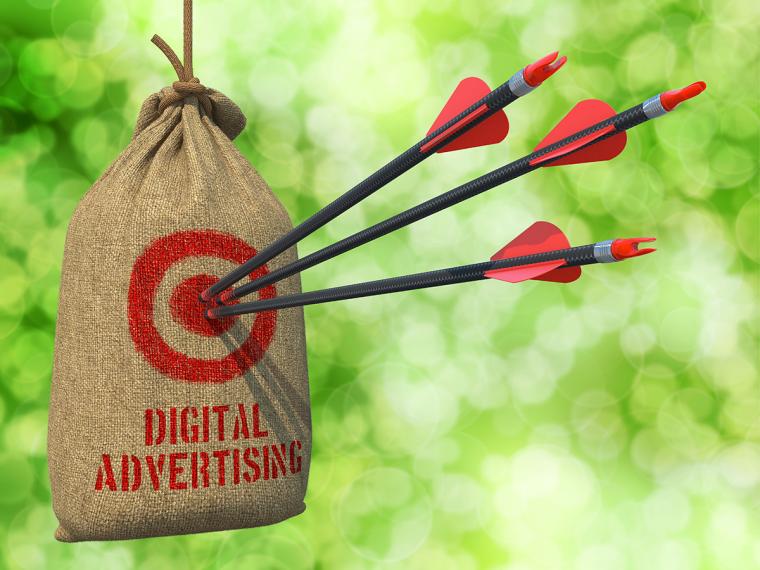
 It’s been said for years that social media is the “new front door” to your business. YouTube, Facebook and Instagram reign supreme as the most popular platforms for adults and teens alike. It’s easy to think that organic social media is the silver bullet to promoting your business with videos like “Charlie bite me” that have received more than 15 million views on YouTube and Grumpy Cat, whose cantankerous face has become one of the most widespread memes since his internet debut in 2012. What many event owners, business professionals and wanna-be influencers have learned is – it’s not that easy.
It’s been said for years that social media is the “new front door” to your business. YouTube, Facebook and Instagram reign supreme as the most popular platforms for adults and teens alike. It’s easy to think that organic social media is the silver bullet to promoting your business with videos like “Charlie bite me” that have received more than 15 million views on YouTube and Grumpy Cat, whose cantankerous face has become one of the most widespread memes since his internet debut in 2012. What many event owners, business professionals and wanna-be influencers have learned is – it’s not that easy.
There are more than 65 million local businesses using Facebook, according to a statement from GeoMarketing in 2017. With that level of clutter, competition for attention and ever-shifting algorithms, it’s tough to get – and stay in touch with – your target audience with organic social posting alone. Fortunately, there are a myriad of strategies and tactics that are proven to make your event or tournament stand out and generate new business.
Using these six keys, you can substantially increase your digital influence by creating and leveraging crave-worthy content.
Key 1: Create content that passes the sniff test.
Does your content stink? If it’s past its expiration (not relevant), a gimmick (salesy) or is a cheap substitute (not authentic), your potential customers will turn up their digital nose and keep on scrollin’.
Creating relevant and authentic content begins by studying and understanding the needs of your target audience. For many event owners, the target market is club directors, coaches and other team influencers. Sure, they need to know your event date and the nuts-and-bolts information, but in what other topics are they interested? Posting real-world testimonials is a great way to self-promote with authenticity and breaks up the sales voice that most users have learned to tune out. Writing original content, such as a blog post on “Tips and Tricks to Save During Tournament Season,” both drives users to your website from social media channels, provides value to users and is relevant during the off-season when event-driven content is in short supply.
Key 2: Be memorable.
Have you ever shaken someone’s hand and immediately forgotten their name? The same thing happens online. The handshake is akin to my eyes viewing your boring content and forgetting your name is akin to – well, forgetting your name. One tip for creating memorable content is to select great photos. Stock photography has resulted in some photos that are so overused they become synonymous with bad design and lazy advertising. Hire a professional and get some real, authentic (see Key 1) photos from your events.
Take a look at some other tournament or event providers’ pages or websites – do you stand out? In a world that zigs, dare to zag. Try something unique and give it time and repetition to work. A single unique post isn’t going to shake up your market position, but a campaign of coordinated posts, blogs, tweets and e-mails is enough to get anyone’s attention. This can take the form of unique graphic design, color scheme, humorous language/approach, mascot or emotional connection.
Key 3: Follow the triple B rule.
Be brief. Be bright. Be gone. A common phrase in the business world, pioneered by David Currier, this is as useful online as it is in real life. Believing there are Facebook or YouTube users who are going to watch your 15-minute promotional video is like believing in unicorns. They’re not going to watch for five minutes, or even for three minutes. The optimum video length for Facebook is about 60 seconds. If you can tell the story in less than 30 seconds, that’s even better. The same idea goes for press releases, blog/social posts, presentations – really any form of communication. Get to the point, provide useful information and don’t let it drag on too long – or your content will be lost in the shuffle.
Key 4: Leverage the digital spectrum.
Remember e-mail? That’s still a great marketing tool in 2019. Believe it or not, according to McKinsey & Company, e-mail is up to 40 times more effective than social media. Take that, Twitter! In addition to following the three keys above, it’s important to create e-mails that are clear and simple. Packing six or seven different topics in a single e-mail isn’t effective. Craft e-mails featuring one topic or event at a time.
Are you segmenting your database? If your MailChimp has one big hot mess of contacts, you’re doing it wrong. Segment your e-mail addresses by location (state/zip code), demographics (age of players) or engagement (core players, first time contacts) and then tailor your message to that specific audience. A solid statistic to shoot for is an open rate of 25 to 30 percent. If you’re not achieving this rate, consider adjusting your subject line and preview text to something more descriptive or enticing. Stay away from salesy language and exclamation points or you’ll end up in a spam folder.
The digital spectrum includes social, e-mail, blog, video, white paper, press release, text campaigns, online ads, feature listings, reviews, Google My Business, SEO, SEM and more. Ideally, all these activities come together to create a cohesive marketing effort with goals and key performance indicators (KPIs) centered around your revenue goals. This is a daunting task for even an experienced marketer. Event owners with a strong social following and a decent website should focus on adding and mastering one additional channel at a time.
Key 5: Give them a free education.
People want to work with those who educate them. This is the foundation for content marketing. Using your industry expertise to provide useful, educational or interesting information to your target audience is a strategy to establish yourself or your brand as an industry leader, trusted information source and sought-after resource.
This strategy can be executed in the form of event case studies, published blog articles, educational videos, podcasts, webinars and how-to guides. Using a simple “gated content” method with paid social push can increase your reach, position your brand and call your users to action. This begins with developing quality content in a downloadable guide and posting this on your website, which is only accessible through a form or “gate.” A site visitor provides their name and e-mail address in exchange for access to your valuable content – adding to your email database. Creating a paid social advertisement promoting your content with a “download” or “give me my guide” call to action will drive new visits to your website.
Key 6: It pays to pay.
There’s a reason paid advertising is popular – it works. Increasing your audience also increases your influence. Every paid advertisement or campaign should have a clear goal and KPI. For video campaigns, this goal is often centered around views and parsed in 10-, 20-, 30- and 60-second segments. Your most important information should be early in the video because there tends to be significant drop-off in viewership as the video progresses.
For social and other digital ads, performance can be measured in soft KPIs like impressions – how many people saw the ad, or in clicks. Click-through rate (CTR) is one of the most common performance metrics for digital advertising. CTR is calculated by dividing the number of clicks by the number of impressions. A good benchmark CTR for Facebook ads is two to three percent.
Print advertising can be an important component to a well-rounded marketing mix in addition to your digital efforts. By including a strong call to action surrounding your website, you can both create brand awareness and generate online engagement.
Using these tips can help you create content that engages your potential customers in meaningful ways, expands your audience, generates new contacts and keeps your existing database engaged. By creating content that is specific to your market, educational, relevant, authentic and distributed in multiple channels, you’ll leave your audience craving more. SDM

